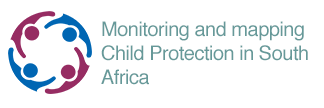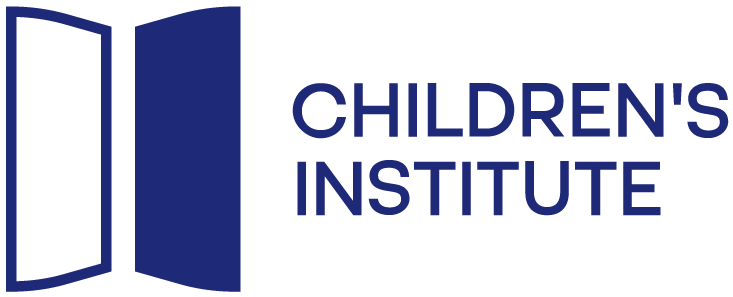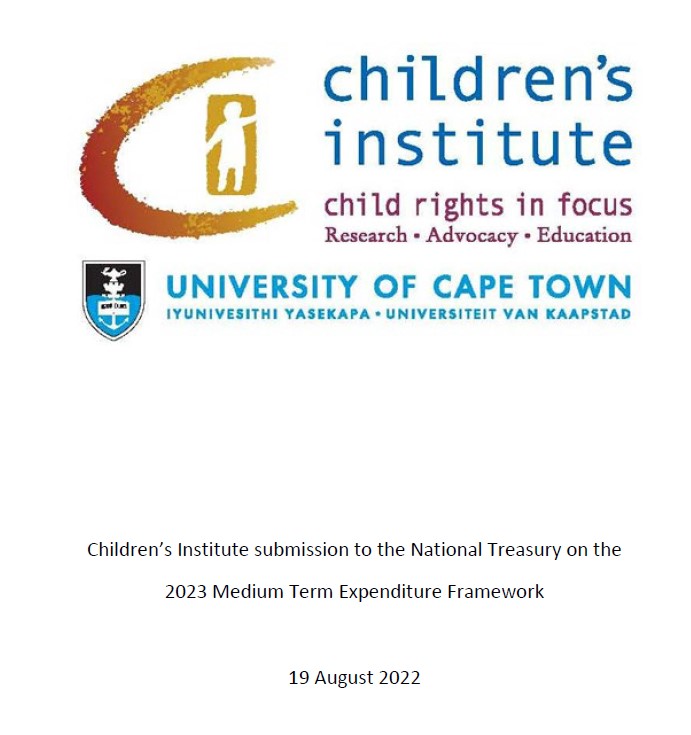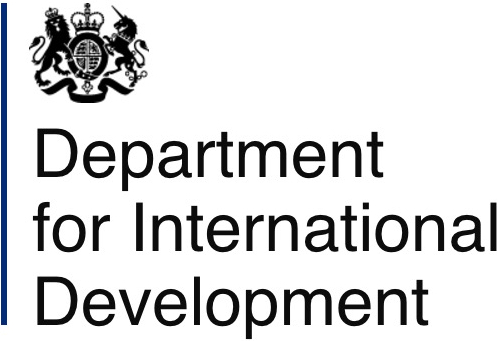This indicator shows the number and proportion of young women aged 15 – 24 who are reported to have been pregnant or given birth to a child in the past year.
Statistics South Africa (2010-2025) General Household Survey 2009-2024. Pretoria, Cape Town: Statistics South Africa.
Analysis by Katharine Hall & Sumaiyah Hendricks, Children's Institute, University of Cape Town
Teenage pregnancy rates are difficult to calculate directly because it is hard to determine how many pregnancies end in miscarriage, still-birth or abortion: these are not necessarily known to the respondent, or accurately reported. In the absence of reliable data on pregnancy, researchers tend to rely on childbearing data (i.e. the percentage of women in an age group who have given birth to a live child).
Despite widespread assumptions that teen pregnancy in South Africa is an escalating problem, the available data suggest that the percentage of teenage mothers is not increasing. A number of studies have suggested a levelling off and even a decrease in fertility rates among teenagers in South Africa.1 Teenage fertility rates declined after the 1996 census, and Department of Health data over the past two decades show a consistent reduction in teenage antenatal clinic attendees aged 15-19 as a shared of the ante-natal HIV prevalence survey samples.2
Fertility rates are an indicator of possible exposure to HIV. HIV prevalence rates are highest among women in their late twenties and thirties, and much lower among teenagers, and the prevalence rate in the 15 – 24 age group has decreased over the past 10 years. However prevalence rates are still a concern: of the young pregnant women surveyed in antenatal clinics in 2022, 7.6% of those aged 15 – 19 and 16.4% of those aged 20 – 24 were HIV positive.3 For many years the majority of deaths in young mothers were caused by HIV.4 Much of the overall decline in maternal deaths since 2011 is attributed to implementation of policies to manage and prevent HIV,5 but it is still important that safe sexual behaviours are encouraged and practised.
Since 2009 the nationally representative General Household Survey (GHS) conducted by Statistics South Africa has included questions on pregnancy and childbirth. The pregnancy question asks the household respondent: “Has any female household member [between 12 – 50 years] been pregnant during the past 12 months?” For those reported to have been pregnant, a follow-up question asks about the current status of the pregnancy, including whether the child was born alive. This indicator calculates the number and percentage of young women who are reported to have been pregnant or given birth to a live baby in the past year.
According to reported data in the GHS, 8% of young women aged 15 – 24 were pregnant in the year preceding the 2022 survey. This represents just over 400,000 pregnancies among young women under 25 years.
As would be expected, pregnancy and childbearing rates increase with age. Only 2% of girls aged 15 – 17 were reported to have been pregnant in the previous 12 months (representing 38,000 teenagers in this age group). Reported pregnancy rates rose to 9% among 18 – 20-year-olds (127,000 when weighted), and 13% in the 21 – 24 age group (242,000).
Reported rates of pregnancy and childbirth for young women have declined gradually over the years according to the GHS, with a steeper decline between 2019 and 2022. The reported pregnancy rate of 8% in 2022 is lower than the rates of 10-11% reported in all previous years dating back to 2009 when the question was first asked in the survey. During the lockdown years of 2020 and 2021, the abridged GHS did not ask questions about childbirth, and so it is not possible to estimate the impacts of lockdown on pregnancy from the survey data.
An analysis of public sector data from the District Health Information System suggested that teenage births increased yearly in most provinces between 2017 and 2021. Over this period, the number of births to teens aged 10-14 nationally increased from 2,726 to 4,452. The analysis also identified an 18% increase in births among teenaged girls aged 15-19, from just under 120,000 in 2017/18 to an estimated 146,000 in 2021/22 - although the outer year was estimated by doubling the number of births recorded in the first half of the year. This nevertheless raised concerns about rising child pregnancies and teenage pregnancy rates over the lockdown years.6
Studies have found that early childbearing – particularly by teenagers and young women who have not completed school – has a significant impact on the education outcomes of both the mother and child, and is also associated with poorer child health and nutritional outcomes.7 For this reason is it important to delay childbearing, and to ensure that teenagers who do fall pregnant are appropriately supported. This includes ensuring that young mothers can complete their education, and that they have access to parenting support programmes and health services. The babies of teenage mothers may need additional monitoring and support to ensure that they develop healthily and are adequately provided for, including being cared for in safe environments if the mother needs to return to school after birth.
Although pregnancy is one of the causes of school drop-out, some research has also suggested that teenage girls who are already falling behind at school are more likely to become pregnant than those who are progressing through school at the expected rate.8 So efforts to provide educational support for girls who are not coping at school may also help to reduce teenage pregnancies.Of the 92% of infants who could be matched to their mothers in 2022, 8% had mothers under 20 when they gave birth. This represents almost 100,000 babies with young mothers who may still be completing school.
Poverty alleviation is important for both the mother and child, but take-up of the Child Support Grant among teenage mothers is low compared with older mothers.8 This suggests that greater effort should be made to assist young mothers to obtain birth certificates for their babies and identity documents for themselves so that they can apply for grants. Ideally, home affairs and social security services should form part of a comprehensive maternal support service at clinics and maternity hospitals.
1 See, for example: Jonas K, Crutzen R, van den Borne B, Sewpaul R & Reddy P (2016) Teenage pregnancy rates and associations with other health risk behaviours: A three-wave cross-sectional study among South African school-going adolescents. Reproductive Health, 13(50). DOI: 10.1186/s12978-016-0170-8;
Ardington C, Branson N & Leibbrandt M (2011) Trends in Teenage Childbearing and Schooling Outcomes for Children Born to Teens in South Africa. SALDRU Working Paper 75. Cape Town: Southern African Labour & Development Research Unit, UCT;
Makiwane M, Desmond, C Richter L & Udjo E (2006) Is the Child Support Grant Associated with an Increase in Teenage Fertility in South Africa? Evidence from National Surveys and Administrative Data. Pretoria: Human Sciences Research Council.
2 Department of Health (2005 – 2024) National Antenatal Sentinel HIV and Syphilis Prevalence Surveys 2004 –2022. Pretoria: DoH.
3 Department of Health (2024) National Antenatal Sentinel HIV and Syphilis Prevalence Survey 2022. Pretoria: DoH
4 Ardington C, Menendez A & Mutevedzi T (2015) Early childbearing, human capital attainment and mortality risk. Economic Development and Cultural Change, 62(2): 281-317.
5 Department of Health (2018) Saving Mothers 2014 – 2016: Seventh triennial report on confidential enquiries into maternal deaths in South Africa: Short report. Pretoria: DOH
6 Barron P, Subedar H, Letsoko M, Makua M & Pillay Y (2022) Teenage births and pregnancies in South Africa, 2017-2022 – a reflection of a troubled country: Analysis of public sector data. South African Medical Journal 2022;112(4),: 252-258.
7 Branson N, Ardington C & Leibbrandt M (2015) Health outcomes of children born to teen mothers in Cape Town, South Africa. Economic Development and Cultural Change, 63(3): 589-616;
Ardington et al, 2015 (above)
Ardington et al, 2011 (above).
8 Timæus I & Moultrie T (2015) Trends in childbearing and educational attainment in South Africa. Studies in Family Planning, 46(2): 143-160.
9 SASSA grant statistics reports, on request.
See also Makiwane M (2010) The Child Support Grant and teenage childbearing in South Africa. Development Southern Africa, 27(2): 193-204;
Kesho Consulting and Business Solutions (2006) Report on Incentive Structures of Social Assistance Grants in South Africa. Report commissioned by Department of Social Development, Pretoria.
This question was first introduced in the General Household Survey in 2009, and was omitted from the abridged survey in the lockdown years of 2020 and 2021. In 2022 the GHS reinstated the question about pregnancy but did not resume the question about the current status of the pregnancy.
It should be noted that questions on pregnancy are not necessarily asked of the young women themselves as questions about all household members are typically answered by the key respondent or household head. It is quite likely that there is reporting error in the pregnancy question in particular, as pregnancies might not yet be known or may be hidden from other household members. One would expect lower levels of error in reporting when children have been born alive. This indicators therefore presents trends on both pregnancy and childbirth.
The GHS uses a Master Sample frame which has been developed as a general-purpose household survey frame that can be used by all other Stats SA household-based surveys that have design requirements that are reasonably compatible with the GHS. The sample is drawn from Census enumeration areas using a stratified two-stage design with probability proportional to size sampling of PSUs in the first stage, and sampling of dwelling units with systematic sampling in the second stage. The resulting sample consists of just over 20,000 households with around 70,000 individuals, and should be representative of all households in South Africa. It is also designed to be representative at provincial level and within provinces at metro/non-metro levels and three geography types (urban areas, rural areas under traditional authority, and farms).
The sample consists of households and does not cover other collective institutionalised living-quarters such as boarding schools, orphanages, students’ hostels, old-age homes, hospitals, prisons, military barracks and workers’ hostels. These exclusions probably do not have a noticeable impact on the findings in respect of children.
Changes in sample frame and stratification
Since 2014 the GHS has been based on the 2013 master sample that that is, in turn, based on information collected during the 2011 Population Census. The previous master sample for the GHS was used for the first time in 2008, and the one before that in 2004. These again differed from the master sample used in the first two years of the GHS: 2002 and 2003. Thus there have been four different sampling frames during history of the annual GHS, with the changes occurring in 2004, 2008 and 2013. In addition, there have been changes in the method of stratification over the years. These changes could compromise comparability across iterations of the survey to some extent, although it is common practice to use the GHS for longitudinal monitoring and many of the official trend analyses are drawn from this survey.
Weights
Person and household weights are provided by Stats SA and are applied in Children Count analyses to give population estimates on the indicators. The GHS weights are derived from Stats SA’s mid-year population estimates for the relevant year. The population estimates are based on a model that is revised from time to time when it is possible to calibrate the population model to Census data and larger population surveys such as the Community Survey.
In 2017, Stats SA revised its demographic model to produce a new series of mid-year population estimates and the GHS data were re-released with the revised population weights. All the Children Count indicators were re-analysed retrospectively, using the revised weights provided by Stats SA, based on the 2013 model. The estimates are therefore comparable over all years. The revised weights particularly affected estimates for the years 2002 – 2007.
The 2017 model drew on the 2011 census, along with vital registration, antenatal and other administrative data, but was a “smoothed” model that did not mimic the unusual shape of the age distribution found in the census. The results of the 2011 census were initially distrusted because it seemed to over-count children in the 0 – 4 age group and under-count children in the 4 – 14-year group. It is now thought that the fertility rates recorded in the 2011 population census may have been an accurate reflection of demopraphic trends, with an unexplained upswing in fertility around 2009 after which fertility rates declined again gradually. Similar patterns were found in the vital registration data as more births were reported retrospectively to the Department of Home Affairs, and in administrative data from schools, compiled by the Department of Basic Education. In effect, this means that there may be more children in South Africa than appear from the analyses presented in these analyses, where we have applied weights based on a model that it is now known to be inaccurate.
Stats SA has subsequently developed a new population model - the 2022 series, which provides revised mid-year population estimates back to 2002 and projected to 2032. However, the GHS series has not yet been reweighted.The population estimates in Children Count are therefore based on weights derived from outdated population model (2017). It is not yet clear when and how the population model will be revised again following the 2022 Census, as there are concerns around census under-count and plausibility of its findings.
Disaggregation
Statistics South Africa suggests caution when attempting to interpret data generated at low level disaggregation. The population estimates are benchmarked at the national level in terms of age, sex and population group while at provincial level, benchmarking is by population group only. This could mean that estimates derived from any further disaggregation of the provincial data below the population group may not be robust enough.
Reporting error
Error may be present due to the methodology used, i.e. the questionnaire is administered to only one respondent in the household who is expected to provide information about all other members of the household. Not all respondents will have accurate information about all children in the household. In instances where the respondent did not or could not provide an answer, this was recorded as “unspecified” (no response) or “don’t know” (the respondent stated that they didn’t know the answer).
For more information on the methods of the General Household Survey, see the metadata for the respective survey years, available on Nesstar or DataFirst






 The SAECR 2024 tracks trends on the status of children under 6.
The SAECR 2024 tracks trends on the status of children under 6. 








